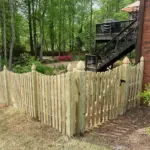One of the primary advantages of any CNC operation, including 5-axis CNC services, is its automation. The machines interpret computer programs, which often result in reshaping a material until the desired features are incorporated. With 5-axis machining, the device does much more than just machining and chipping through a workpiece. The device shows marked independence, allowing it to perform numerous actions in a single step.
First, the machine can work across three axes – X, Y and Z. Beyond this ability, the 3+2 and 5-axis CNC machines can switch and rotate the workpiece across two coordinates – A and B, for more effective machining. However, while the 3+2 axis may experience some restrictions, the continuous 5-axis CNC is almost unlimited, making it a perfect fit for parts with highly complex geometries yet having tight tolerance and precision requirements.
In selecting a 5-axis machining center, the focus is usually on the robots, the automation of the system or moving parts of the machine that channels the fabrication. The success of your design using 5-axis CNC machining depends on the coordination of the machine systems. They control the moving parts, which drives the accuracy of the spindle and other cutters, permitting reproducibility even after several production runs.
Why Automation is Necessary for Manufacturing
Since machine automation limits human intervention, it decreases error propensity, enabling the machine to produce tight tolerance 5-axis parts regardless of the number of fabrications. Before purchasing a machine, you must consider the benefits of the device. Is it suitable for your design, especially when your part has high precision requirements? Regardless of your operation, the optimum part’s quality should always be the goal. At that, acquiring 5-axis CNC ensures that your design specifications are achieved.
5-axis CNC machines can run their operations independently; you just need to trust the ability of the machine to design your intended fabrication to the letter. Automated systems ensure stability during machining giving rise to accurate production. Besides, the process is less time-consuming, as machinists do not need to adjust the workpiece further as the spindle and other cutting tools maneuver around the workpiece as they chip off pieces of the material.
Also, an automated system ensures the regulation of all aspects of the machines, such that there is no worry of overheating specific components. Therefore the machining can be performed for extended periods, even through the night, for maximum productivity. Another thing to consider about automation is that the fabrication outcome is often almost exact, requiring little to no finishes or post-processing operations.
Machine Design Enhance Accuracy and Reproducibility
Beyond the machine’s capabilities, the design is integral to achieving a fabrication that encompasses all the intricate details. The machine design includes the geometrical accuracy, stability and rigidity of its various components.
For example, the sign of a continuous 5-axis CNC machine is such that its cutters can simultaneously cut around different portions of the workpiece. Also, it supports the rotation of the components across two coordinates at the same time. The stability and precision features of a machine are essential for machine automation. They ensure the possibility of achieving the necessary design specifications of a part’s fabrication.
Like Us on Facebook!
Most 5-axis CNC machining centers tend to run the automated system for long periods, even after business hours into the night. Therefore, they need to consider thermal stability major criterion, especially for lights-out machining. Since the process runs with minimal human input, there must be an optimum system for regulating, controlling and preventing temperature build-up.
Subscribe Us on YouTube!
During parts machining, friction exists and a high tendency to build up heat within the cutters, the workpiece and possibly the entire CNC device. Therefore, it is vital that there is an active cooling mechanism to cool off the rising temperature around the spindle, driving motors, and other moving machine parts.
You’d agree that the 5-axis machine is highly sophisticated. Beyond the temperature regulation, it also has a designated axis that specializes in maintaining machine stability and geometric accuracy of the fabrication. Such that even during the fabrication of thousands of parts, the first and last products show little to no distinction. Each component produced is exact, possessing the required tolerance and precision specifications.
Effects of Materials on 5-Axis CNC
The kind of material the machine is cutting may also play a significant role in the device’s performance. Indeed, machinists need to use materials with good mechanical properties for quality fabrication. This also builds the integrity of the machine shop. However, you should not overcompensate for the strength of a material at the risk of your cutting tools.
5-axis machines cost a lot, so you sure want them to serve you for a long time. Therefore, it is best to avoid consistent machining of overly strong materials like titanium and cobalt alloy, especially for fabrication where low-carbon and aluminum will prove as effective. They also show good strength among other mechanical features, yet they have better machining properties. Also, they will not excessively stress your cutting tools.
Machining more rigid and tough materials increase the wear and tear of your cutting parts, reducing the efficiency, lifespan and overall performance of the CNC device. Also, you’ll probably need more tooling – the tool magazine will consist of tools that are usually redundant when machining simpler materials. Also, you may need to engage in more in-process measurements to ensure proper fabrication.
Conclusion
When selecting a 5-axis CNC machine, it is essential to consider the automation of the entire system. Often, manufacturers reserve this CNC device for complicated fabrication because of their ability to cut and incorporate complex angles, geometries and features into your design.
Beyond their capabilities, an automated system supports lights-out machining, which hastens large-volume production. The machines continue precise and unassisted fabrication deep into the night, yet the end product satisfies all necessary design specifications.

















